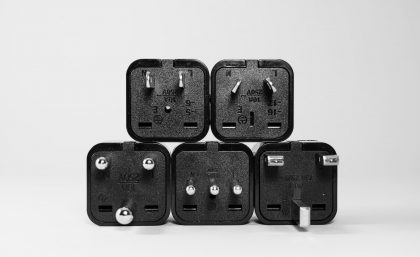In the last couple of weeks, I have had the pleasure to visit and participate in the London Build Expo and Digital Construction Week.
Those events can be quite overwhelming with a large number of exhibitors and talks going on. I must admit that I don’t feel that I have seen the entirety of what was on show and I am yet to figure out how to take the most advantage of events like this, but here is my angle on the whole shebang.

One of the most positive things for both events to me was the fact that the digital construction community is active, growing and very welcoming. I have only been really involved since the start of April this year and I am already meeting familiar faces and have a sense of being in the “right room”. As one of the least diverse industries, construction may have built itself a truly accessible door with the development of digital construction. I could only take really part of the Women in BIM breakfast at Digital Design Week and some of the events around the BIM and Digital construction Summit at London Build, it was easy to see that even though a significant proportion of the BIM specialists around have a fairly privileged background, there are a lot of professionals soaring up the ranks truly based on merit and not supported at all by gender, skin or an expensive degree – it is a real joy to see this happening.
DCW was busy colourful and social. There were many interesting platforms and tools ready to fuel the industry with more intelligent processes. At first glance it felt a little exhausting that there seem to be so many different directions in the effort for digitalisation, but as soon as I managed to strip my bias growing from the fact that I am particularly skilled in one type of workflow, I really think that when we manage to swallow the market growing pains, we will find ourselves with actual functioning choice of tools that can deliver BIM. The most important thing that we all must not forget is to try and keep to a similar language with all those tools, input and output need to be standardised.
Which brings me to the topic of a panel I was part of at London Build and the talk I gave there too – “Fantastic BIM Standards and Where to Find Them”. (I did indulge in some punny graphics there…)

Image – @WomeninBIM
With some inspiration from Jared Banks, I spoke about the importance of standardization for the effectiveness of the BIM process. I see a couple of clear reasons that have been tripping the spectacular promises of up to 50% savings of time and money on construction projects. The first one is the fact that we come from a culture of bespoke products – I remember specifically lectures in University teaching me how each building I will ever be involved in building will be unique, even if it is seemingly the same, the fact that it is not on the exact same position on the planet will make it a different building. So how can we expect professionals to simply embrace the standardization in the processes, it feels entirely contra-intuitive to what they have been told their skills are? As always things like that don’t fit into 140 characters – a well thought through the standardized process will not make any profession obsolete – it will only create more resources to do a better job, or – dare we imagine – prevent hundreds of hours unpaid overtime at work. And the second obstacle is the fact that standardization requires an initial investment and in an industry notorious for late payments, talking about upfront investments is practically laughable.
I avoided giving prescriptive methods of creating office standards for BIM, in my talk, because I wanted to emphasize on two steps that I think are vital following the creation of a BIM Office Procedures Manual and a robust New Project Template. First, in order for those two to be consciously adopted the staff needs to understand why this is happening, so the contractual documents that require and describe the process MUST be available to everyone. And when I say everyone, I do mean it, every draughts person needs to not only be aware of, but they refer to the EIRs and the BEP on, practically daily basis at the start of a project. And secondly, intentionally and purposefully introduce the new standards, with excitement for the process and the technologically advanced tools but also with respect for the talent and experience of your staff. You can’t make this happen via email, you need to bring real-life human energy to the process, and allow time for the information to saturate with that informed and helpful presence around.
Speaking of standards, Stephen Hamil, Director of Research and Innovation – NBS moderated the aforementioned panel about standardization, where we had an excellent opportunity to discuss various different points of view to standardization. We look at it from the point of view of the designers in the face of Patrick King, Associate Director/Head of BIM Technologies – ECD Architects, the manufacturers – Paul Surin, Chair of BIM4M2 and Chair of Digitalization TG of Construction Products Europe, the large-scale BIM Manager – Joel Martineau, Associate – Buildings Digital Practice – Stantec and the smaller scale BIM consultant – myself. We all seemed to agree that some significant reading needs to be done, before embarking on the BIM journey and that it is hard to rely on external content.
 II
II
Image: @Johnad25
Despite about a quarter of LondonBuild dedicated to the BIM and Digital Construction Summit, I was quite disappointed chatting to a couple of facilities management companies and even an on-site health and safety specialists. They did not seem to envision incorporating their own work with the BIM process even in the forseeable future. This only comes to show the huge rift that we have in the industry. There are leaders in the industry that are doing admirable work in their use of technology and information, however, the Construction industry as a whole remains one of the least digitalized industries, only beating Agriculture and Hunting.
I had the pleasure of taking part in a diversity panel chaired by Rebecca Di Cicco, geared toward BIM. Obviously, I have a lot of thoughts about this and some of them you may read here. On the image below from left to right – Emma Rees, BIM Manager – Wates Construction, myself, Vicki Holmes, Learning Partner & Women in BIM core team member – Multiplex Construction Europe Ltd, Rebecca De Cicco, Director – Digital Node, Kirsti Wells, Business Development – Cadcoe, Eva Quevedo Caballero, BIM Manager – Skanska.

Image – @WomeninBIM
But LondonBuild did not disappoint with their approach to diversity, this wasn’t just one “token” diversity event – they seemed committed to the cause. There were several other diversity driven initiatives and I had the pleasure of seeing one of the panels around the Women in Construction breakfast. This panel was made of three women of colour, an immigrant and was chaired by a trans woman – on the photo below from left to right – Aga Hall (Design Manager), Anjali Pindoria (Surveyor), Neesha Gopal (Architect), Srimathi (Priya) Aiyer (Architect) and Christina Riley (Planner). As a part of the LGBTQIA+ community, I was moved by this – sometimes when you have been deprived of something for so long, you almost forget about it, and when you are reminded of it, it can become overwhelming. I am enormously grateful to know I can be working in a time and space where people that reflect my own community and the people I love, are visible, proud and confident to be themselves. Very poignantly members of the audience noted that the panel did not include a disabled person or anyone from Afro-Caribbean descent, and while this is more than a valid point, I really wished that kind of comments were more often made towards panels made entirely of middle-aged white men. Nevertheless, for what felt like the first time, most of my identities we represented in the profession that I have been a part of for a while and that allowed me to discover a new way to feel at home on the job.






Thanks for the shout out. Sounds like it was a great event.
Thank’s for the article! it was a lot of fun